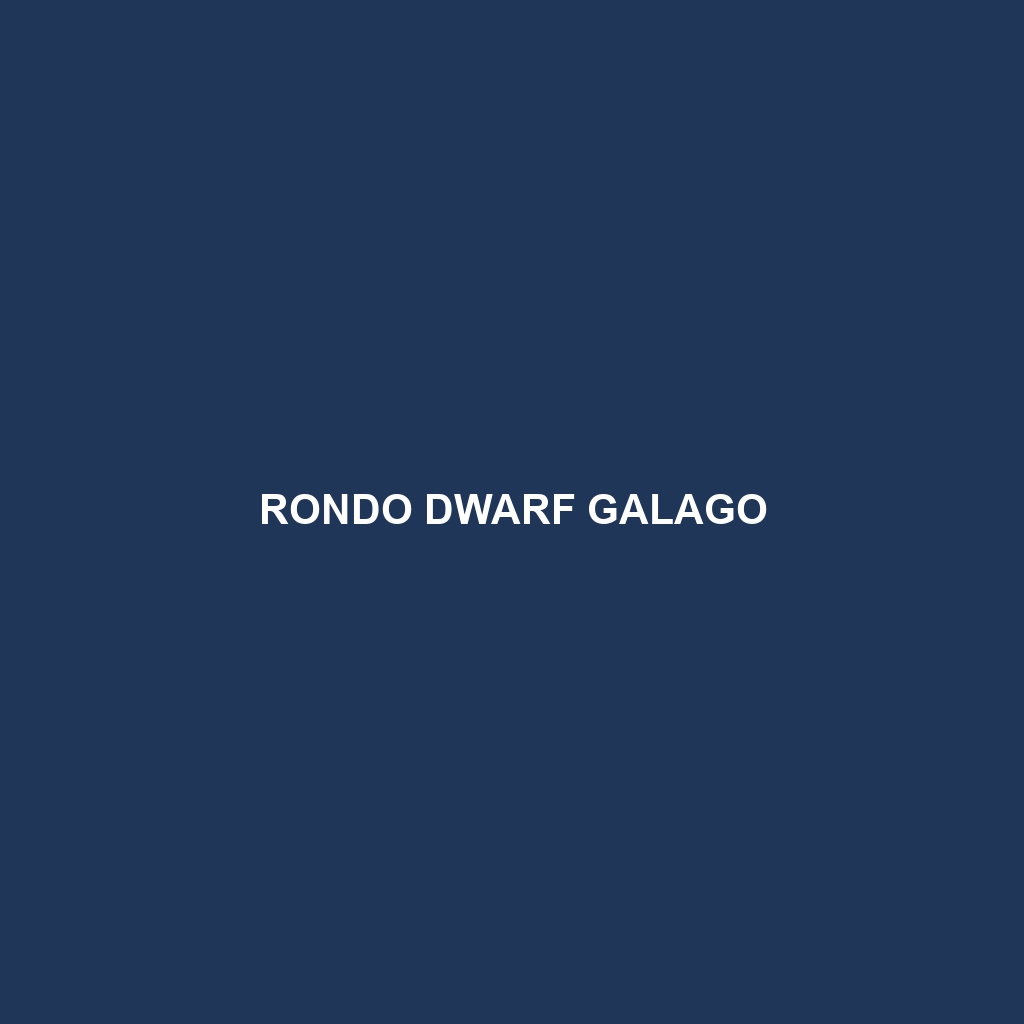Rondo Dwarf Galago
Common Name: Rondo Dwarf Galago
Scientific Name: Galagoides rondoensis
Habitat: The Rondo Dwarf Galago is primarily found in the coastal forests of southeastern Tanzania. This nocturnal primate inhabits dense, moist forests, often near riverine systems and areas with abundant vegetation. Its preference for specific habitat types underscores the importance of preserving these ecological zones for conservation efforts.
Physical Characteristics: The Rondo Dwarf Galago is a small primate, typically weighing between 200 to 300 grams. It has a distinctive coat of soft, grayish-brown fur, which provides excellent camouflage among the leaves. Its large, round eyes are adapted for night vision, making it an effective forager under cover of darkness. The short tail, due to its dwarfism, measures about 30 centimeters, combining agility with a compact size. These features make the Rondo Dwarf Galago easily identifiable in its habitat.
Behavior: Known for its social nature, the Rondo Dwarf Galago typically lives in small family groups. It is highly arboreal, spending most of its time in trees, where it exhibits unique locomotion skills such as vertical climbing and jumping between branches. This species is also known for its vocalizations, producing a variety of calls that help maintain social cohesion and communicate threats.
Diet: The Rondo Dwarf Galago is an omnivore that feeds primarily on fruits, insects, and occasionally small vertebrates. It has a specific preference for sweet fruits, which are abundant in its forest habitat. Its foraging behaviors include leaping through the canopy to locate food sources, highlighting its adaptation to an arboreal lifestyle. Understanding its dietary habits is crucial for conservationists aiming to protect its natural habitat.
Reproduction: The breeding season for the Rondo Dwarf Galago typically occurs during the rainy months, which correlates with increased food availability. Females usually give birth to a single offspring after a gestation period of about four months. The young are nurtured and cared for by both parents, showcasing strong family bonds and cooperative parenting behavior, which is vital for the survival of the species.
Conservation Status: The Rondo Dwarf Galago is currently classified as **Endangered** according to the IUCN Red List. Habitat destruction due to logging, agriculture, and human encroachment poses significant threats, along with the impacts of climate change on its forest ecosystems. Conservation efforts are crucial to ensuring the survival of this unique primate.
Interesting Facts: The Rondo Dwarf Galago is one of the smallest species of galagos, yet it plays a significant role in seed dispersal within its ecosystem. Interestingly, it uses a strategy called “clinging and leaping,” whereby it can leap distances of up to five meters, showcasing its remarkable agility. This species has also been a subject of various studies due to its unique social structures and vocal communication.
Role in Ecosystem: As a seed disperser and insect predator, the Rondo Dwarf Galago plays a crucial role in maintaining the ecological balance of its habitat. By consuming a variety of fruits and insects, it contributes to plant propagation and controls insect populations, thus supporting biodiversity. Its interactions with other species highlight the interconnectedness of forest ecosystems and the importance of protecting such habitats.
